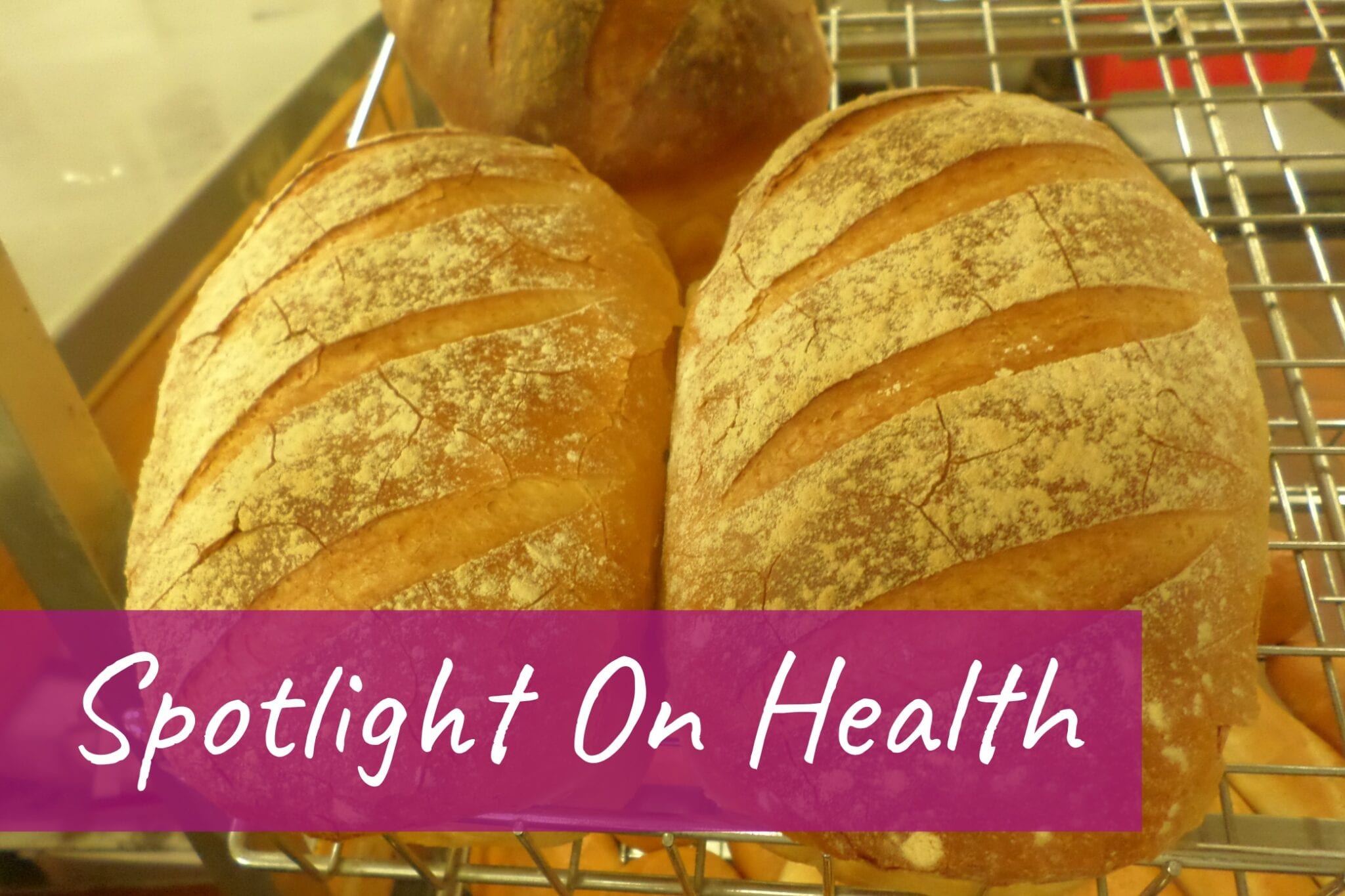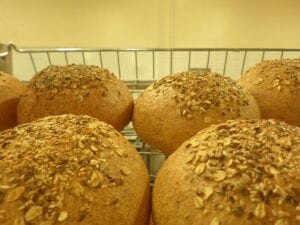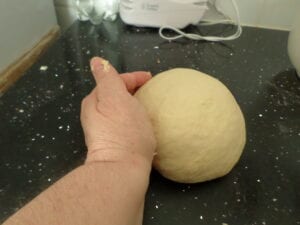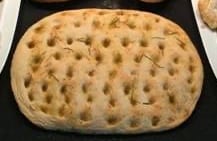
Making Your Own Bread
Monday, 8th February 2021
Good for the soul!
Bread is sometimes called ‘the staff of life’. It was a staple food: people’s pay included bread in the middle ages, it is where the term of the baker’s dozen (13) comes from (bakers could be put in the stocks for underselling so making 13 loaves prevented this, people got an extra loaf per dozen to make up for any shortfalls or light loaves in the batch). It is safe to say that bread has been ingrained in our everyday life for a very long time.
For the last decade there has been a lot of bad press about bread: there are many reasons for this including fast methods of making bread commercially and modern wheats. The increase of gluten intolerance has been linked to this, whilst other research questions the existence of gluten intolerance (this is NOT to be confused with Celiac disease, that definitely exists – that is an auto-immune disease and a very nasty one at that). Many people report feeling bloated or suffer from digestion problems and have linked it to bread consumption. One cause could be the modern wheats which have been developed (with great intentions) – higher yields, more disease resistant, a more reliable crop.
One solution to the bread/bloating conundrum is to try making your own bread, it is not as difficult as you may think and you can choose your ingredients carefully. Baking is very therapeutic especially in these COVID times – good for mental health and kneading bread is very good for arm strengthening!
Sourdough is a buzz-word at the moment – but I wouldn’t start with that…once you have covered the basics it is something to move on to, as it requires careful maintenance of something called a starter, a fermented dough which is used as the base for all sourdough recipes. Instead we will start with something more straightforward.

Ingredients: The 4 basics
Flour: You need a strong flour and I would start with white…if you choose a good one it will have no nasties (unnecessary preservatives, E numbers, etc). Organic is best, read the label – it should just be flour (plus a very small amount of calcium carbonate – chalk – this has been added by law to white flour since WW2; it helps your bones the same way as dairy products). Doves farm is very good, Waitrose do their own farm flour, Duchy organic, Shipton Mill is another good one.
White flour when milled is sieved to remove the husks and wheat germ. This is different to wholemeal flour, which is made by grinding the entire wheat grain.
Wholemeal bread is a little harder to make: a recipe and method for this will follow in a couple of weeks. You need to add more water to wet the bran and it is harder to make the gluten work.
By the way gluten as such doesn’t exist in flour, it is formed from 2 proteins which are present in the flour, once that flour is wetted and kneaded. Strong flour has a higher amount of protein…12-14% usually. Gluten is what you need for structure in bread, it is important for a lot of different types of bread dough.
Salt: Bread HAS to have salt- it controls fermentation, in recent years bakers have reduced as much as possible – any small grained salt will do. BUT, salt kills yeast and must be separated (not a problem with dried quick acting yeast) so follow all bread recipes carefully.
Yeast: All bread needs a raising agent. Yeast is a living single-celled organism, it makes bread rise by producing CO2 when cell division takes place. The CO2 is trapped by the structure made by gluten. So good bread takes time: it’s this process that has been speeded up by the addition of certain chemicals – whilst these chemicals have been safety tested, they are what I think make some people ill. BUT, one of these ‘chemicals’ is actually ascorbic acid AKA vitamin C, so beneficial to our diets.
I recommend buying the fast-acting dried yeast: it is freeze dried and is as good as fresh (Morrisons is your best bet for fresh).
Other breads are also risen with C02 – soda bread: produced from the baking powder in the bread; sourdough works on yeasts developed naturally from the air, or skins of organic fruit and bacterial fermentation. Commercial sourdough producers have their ‘mother’ sours tested to ensure they have ‘good’ bacteria.
Water: Very important! Some insist on using bottled but I trust our tap water (hard Surrey water has a high mineral content). Bread CAN be made with cold water…it just takes longer to prove, but that can give better results/flavour. The more water in relation to the flour you can get into a dough the lighter the bread: bread makers call this hydration. The best sourdoughs are around 90-100% hydration (90mls water – 100g flour).
EXTRAS: Any other ingredients are not needed to make basic bread but they do add other properties:
Sugar: A good way to feed the yeast and help it do its job – also helps the crust of your bread to have colour – use honey or malt extract for more natural sources.
Oil or fat: Helps to develop a soft crumb texture. Enables bread to keep a bit longer. Olive oil can slow yeast down – so not too much in the dough.
Milk: Also softens crumb texture – yeast doesn’t like lactose (milk sugar) so milk or milk powder is added to bread to add colour to the crust too.
The recipe I am giving you 1st is a focaccia (simple one, probably not authentic).
It goes well as a side, sliced horizontally and filled for a posh sandwich…and if you don’t knead it too well it’s ok…under/over proved it will still taste good!

Bread dough for focaccia
500 g Strong Flour
7 g Sachet of fast action yeast
20 mls Olive oil (or rapeseed oil)
280 mls Warm Water
10 g Salt
½ tsp Sugar
- Stir oil into water
- Mix together with the flour, yeast, salt and sugar (you can use a fork to combine ingredients).
- Knead well to form a dough-if you find this hard work, knead together, leave 10 minutes, knead again until smooth…I do this as I have overworked my wrists over the years!
- Wrap and rest until double in size
- Divide into tins/foils- makes 2 9” rounds or use the foils for tray bakes
- Cover and leave to rise- 1hr approx (use oiled cling film)
- Use fingers to make dents in tops,(dip in flour first) drizzle with olive oil, sprinkle with topping of choice (garlic, rosemary, sundried toms, cooked onion, sea salt)
- Bake in a hot oven (220-230*C gas mark 6/7) for 20 mins+ (until golden brown).

Happy baking!
– Sue, Hospitality & Catering lecturer
catering@brooklands.ac.uk
Brooklands Technical College
Weybridge Campus
Heath Road, Weybridge, Surrey KT13 8TT
Brooklands Technical College
Ashford Campus
Stanwell Road, Ashford TW15 3DU
Call











